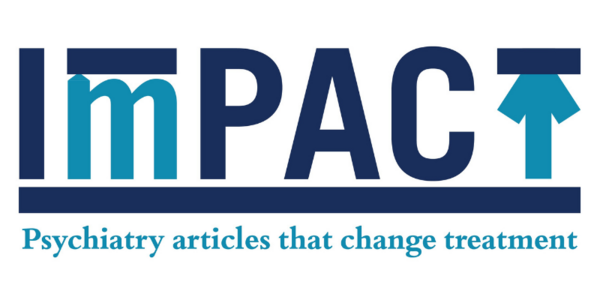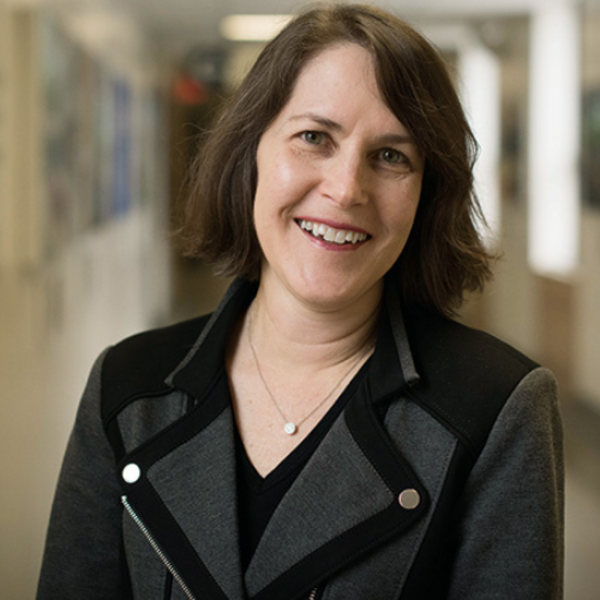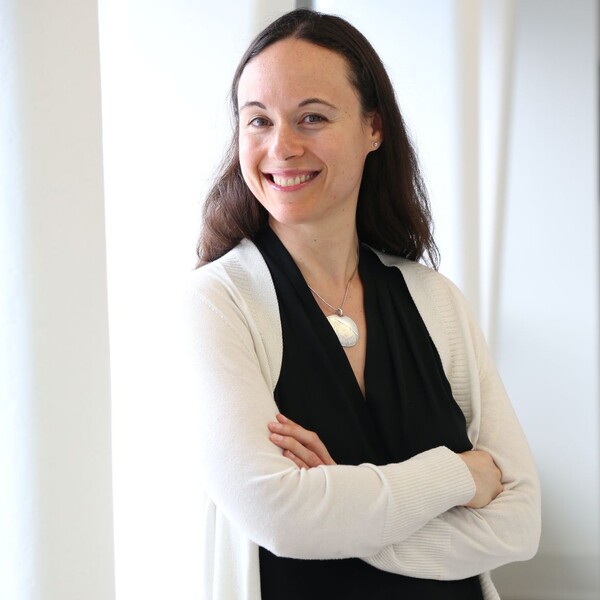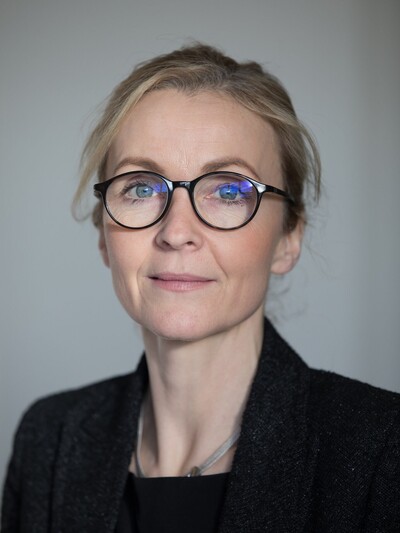
Chair’s Introduction

As I prepare to step down from the role of Labatt Family Chair of the Department of Psychiatry, Temerty Faculty of Medicine (TFoM), University of Toronto, I reflect on the progress that has been made during the past 10 years. We have contributed meaningfully to developing new knowledge and to improving the mental health system in Toronto and Canada. At the same time, I am disappointed that my patients, friends, and family members who live with severe mental illness are not better off today than they were ten years ago; they still struggle with stigma and access to quality mental health services. As we build the future of psychiatry by preparing and supporting the next generation of psychiatry researchers, educators, and innovators, we face complex questions about how to best help those experiencing mental illness. This report summarizes our efforts over the last five years, reviewing the state of our Department, our accomplishments, and areas where we can do better.
First and foremost, the Department is an active community of extraordinary people comprising undergraduate medical students, graduate students, psychiatry residents, fellows, and faculty members. It remains Canada’s largest psychiatry department. In the 2022-2023 U.S. News & World Report, it was ranked as the 8th academic department of psychiatry in the world, up from 12th in 2016.
Collectively, our faculty members have the depth and breadth of scientific expertise needed to innovate. Our research contributes to the understanding of mental disorders and their treatment in a wide breadth of areas, and we provide national and international leadership in teaching and education scholarship. Our training programs prepare learners to care for diverse communities and enact changes to better deliver existing treatments to patients.
Over the past five years, in alignment with the focus of TFOM, a major strategic priority of the Department has been to explicitly incorporate the principles of Equity, Diversity, Inclusion, Indigeneity, and Accessibility (EDIIA) in all we do. Key changes have included the creation of a new Vice Chair position dedicated to EDIIA; requiring unconscious bias training for all faculty members; implementing more transparent and equitable hiring and promotion processes; and a new mentorship program so that everybody can get mentored if they desire.
Clinician investigators and scientists are distributed in, and supported by, our 20 affiliated hospitals and other training sites. Over the past ten years, the Department has developed processes to identify and support the next generation of researchers, from medical students (summer training), to residents (a renewed Clinician Scientist Program, a new Clinician Scholar Program, and new Clinician Researcher Track), to fellows and assistant professors (with the new Academic Scholar Awards and multiple internal seed and pilot funding opportunities). Research productivity has continued to be commensurate with the size of the Department, with growth in grant funding and publications; we continue to publish the largest number of peer-reviewed scientific papers among our peer departments of psychiatry.
Advances in education have included the implementation of five subspecialty streams plus two additional streams focused on research and indigenous mental health, the new Royal College of Physicians and Surgeons of Canada Competence by Design (CBD) curriculum, and the Azrieli Brain Medicine Fellowship Program. We offer our trainees a unique breadth of clinical experiences to prepare them to address the needs of patients and the challenges in the Canadian health care system.
With these advances acknowledged, it still feels that we have to do more. Severe mental illnesses have become the leading cause of disability worldwide, and half of North Americans are now reporting that they are stressed or mentally unwell. The question of if and how the Department should focus its resources and expertise have been raised in the 2019 and 2024 Five-Year Reviews.
Our external reviewers provided their astute observations and thoughtful comments about the strengths and potential weaknesses of the Department, providing recommendations in two areas.
The external reviewers highlighted the potential benefits of fostering integration and collaboration across clinical sites is necessary to ensure we are efficiently using our resources. Greater coordination can help us ensure that faculty members who are focusing on the same areas are connecting. Through our Research Hubs and cross-site fellowships, we can foster greater collaboration and allow our faculty to make progress more quickly.
The external reviewers also highlighted the need to resolve inherent tensions between academic and community sites and needs. The Department is currently reviewing the structure and location of its core residency rotations. It has committed to expanding its core residency training to two major sites: Trillium Health Partners and Scarborough Health Network. We will continue to foster connection with all our community partners through open communication and engage them in education strategy.
Addressing these areas will help us better refine how we allocate resources and prepare future psychiatrists for their careers.
As we navigate the complex challenges posed by mental illness, the Department will continue to lead Canada in training and supporting the next generation of academic psychiatrists who will need collaboration, creativity, and courage to offer a better future to those living with severe mental illness.
Dr. Benoit Mulsant, Professor and Labatt Family Chair of the Department of Psychiatry
Vice Chairs
Vice Chair, Research
Vice Chair, Basic & Clinical Sciences
Vice-Chair, Education
Vice Chair, Mental Health and Addiction Equity and EDIIA
Vice Chair, Clinical Innovation
Faculty
Faculty members are distributed in seven departmental academic divisions and located at 20 affiliated hospitals and other sites across Ontario: eight Toronto Academic Health Science Network (TASHN) Fully Affiliated hospitals, four TASHN Associate partner hospitals, and eight community-affiliated hospitals and sites. 900 faculty members have their primary appointment in the Department of Psychiatry.
Our faculty members have the depth and breadth of scientific expertise needed to innovate and lead across the field of psychiatry. As our Department continues to evolve, we seek to reflect the diversity of our patient population in our faculty population and in our awareness of the wide range of experiences of those living with mental illness.
Academic Rank (N = 900)
Chart data
| Lecturer | Assistant Professor | Associate Professor | Professor |
|---|---|---|---|
| 35 | 43 | 12 | 10 |
| Abbreviation | Division |
|---|---|
| APHS | Adult Psychiatry and Health Systems |
| CYMH | Child and Youth Mental Health |
| C/L | Consultation/Liaison Psychiatry |
| Forensic | Forensic Psychiatry |
| Geriatric | Geriatric Psychiatry |
| NCT | Neurosciences and Clinical Translation |
| PHPI | Psychotherapy, Humanities, and Psychosocial Interventions |

Faculty Mentorship Program
The new Mentorship Program is making one-on-one mentorship easily available to all faculty members, and mentorship groups are providing forums for discussions and knowledge sharing between faculty members based on academic roles or social identities (underrepresented genders, IMGs, LGBTQ2S+, racialized women, etc.).
Academic Scholar Awards
The Academic Scholar Awards (ASAs) were created in 2017 to provide support for protected time for scholarly activity (research, education and Creative Professional Activity). Inspired by US National Institutes of Health career-development (“K”) awards, ASAs are awarded to recipients based on a fair and transparent process (involving triage, external peer-review, and strategic adjudication).
| Rank | Length of Support | Annual Funding | Number of Awards Each Year |
|---|---|---|---|
| Assistant Professor | 3+2 years | $58,000 | 4-6 |
| Associate Professor | 3 years | $68,000 | 1-3 |
| Full Professor | 2 years | $68,000 | 1 |
The ASAs are career-development awards that provide promising Clinical (MDs) and Status-only (PhDs) faculty members with funding to reserve a day of their time each week for scholarly activities. This ensures that the most promising scholarly activities in the Department are recognized and supported. It also provides faculty who are early in their careers with an opportunity to develop their expertise and academic skills to become leaders in their fields. ASAs are also available to Associate and Full Professors who are transitioning (e.g., shifting their research focus or transitioning back from an administrative role to a research focus).
The first cohort of ASA recipients was initiated in January 2018 and 12 awards were issued. Since that time, there has been one cohort annually each July, with 6-11 awards granted. The ASAs currently support 40-50 awardees at any given time with a $2M annual budget. A total of 65 ASAs have been awarded.
| Cohort | Number of awards granted |
|---|---|
| January 2018 | 12 |
| July 2018 | 10 |
| July 2019 | 11 |
| July 2020 | 6 |
| July/August 2021 | 9 |
| July 2022 | 8 |
| July 2023 | 7 |
| July 2024 | 7 |
2024 Academic Scholar Award Recipients
2024 New Leadership Appointments
Director, Research Chair in Forensic Mental Health
Cameron Wilson Chair in Depression Studies
Arthur Sommer Rotenberg Chair in Depression and Suicide Studies
Samantha Wallenius
Assistant Program Director, Indigenous Stream, and U of T Site Lead, Indigenous Stream
2024 Promotions
Senior Promotions
Promoted to Professor
Promoted to Associate Professor
Junior Promotions
Promoted to Assistant Professor
Learners
Residents
The Department has 200 PGY1 to PGY5 general psychiatry residents and 13 PGY6 subspecialty residents, for a total of 213 residents. To our knowledge, this is the largest psychiatry training program in North America. The Postgraduate Medical Education program continues to explore and expand the boundaries of knowledge that will be useful to future clinicians and their patients. Residents train at 15 sites across the City of Toronto and at 9 sites in 6 cities in the rest of Ontario (Mississauga, North Bay, Penetanguinshene, Sault St. Marie, Thunder Bay, and Whitby).
Fellows
The Department maintains a robust Fellowship Program, with 45 fellows currently enrolled at time of reporting. In 2018, changes were made to the status of PhD fellows at the University of Toronto. As a result, the Department can no longer register PhD post-doctoral fellows who complete their training and research activities in affiliated hospitals. The Department carried a roster of ‘grandfathered’ PhD-research fellows until the last of said fellows graduated circa 2019-2020. This has decreased the pool of fellows available to the Department, leading to lower numbers in the most recent five-year period compared to the previous one.
| Year | Total Fellows | Year | Total Fellows |
|---|---|---|---|
| 2014-2015 | 79 | 2019-20 | 56 |
| 2015-2016 | 75 | 2020-2021 | 39 |
| 2016-2017 | 66 | 2021-2022 | 44 |
| 2017-2018 | 82 | 2022-2023 | 52 |
| 2018-2019 | 73 | 2023-2024 | 57 |
Programs
Program Leaders
Assistant Director, General Psychiatry Residency - IMG
Director, Clinician Scientist Program
Director, Forensic Subspecialty
Associate Director, General Psychiatry Residency
Associate Director, MD Program
Director, Faculty Development and Mentorship
Assistant Program Director, Curriculum and Assessment
Director, MD Program
Assistant Director, MD Program
Director, Fellowship Program
Director, Geriatric Subspecialty
Director, Continuing Professional and Practice Development
Director, Clinician Scholar Program
Director, General Psychiatry Residency Program
Director, Child & Youth Mental Health Subspecialty
Publications 2018 - 2023
In preparation for this 5-year review, the Temerty Faculty of Medicine conducted a bibliometric analysis (data source Elsevier - Scopus/SciVal). This analysis showed that the Department’s faculty members produced a total of 10,303 publications in the six-year period from 2018 to 2023 (a 12% increase from 9,242 in the six-year period from 2013 to 2018); focusing on journals classified as “Psychiatry and Mental Health”, the University of Toronto’s faculty members produced a total of 5,394 publications in 2018-2023 (a 26% increase from 4,284 in 2013-2018).
The publications from the Department were compared with publications classified as “Psychiatry and Mental Health” from 10 other peer English-speaking universities selected based on their reputation and academic productivity (see Table below). The University continues to have the highest volume of scholarly output with 5,394 publications (#1 among the 9 universities) and these publications have generated over 95,141 citations (#1, up from #2 in 2013-2018). The Department ranks #7 (up from #10 in 2013-2018) when the number of citations per publication is used as a proxy for quality and impact of the publications

Discover how our faculty's research is changing the lives of patients with our 2022-2024 ImPACT stories.
Divisions
Division Directors
Chief, Child and Youth Mental Health Collaborative, and Director, Division of Child and Youth Mental Health
Director, Forensic Psychiatry
Director, Adult Psychiatry and Health Systems
Director, Neuroscience & Clinical Translation
Director, Psychotherapy, Humanities, and Psychosocial Interventions
Director, Geriatric Psychiatry
Director, Consultation/Liaison Psychiatry
Research Funding
2022-2023 Grant Spending by Source (in millions; total: $59M)
Chart data
| Foundations (39%) | Federal Government (35%) | Research Institutions (9%) | US Government (5%) | Hospitals (3%) | Corporations (3%) | Ontario Government (2%) | Education (1%) | Societies (1%) | Associations (1%) | Other (2%) |
|---|---|---|---|---|---|---|---|---|---|---|
| 39 | 35 | 9 | 5 | 3 | 3 | 2 | 1 | 1 | 1 | 2 |
- In 2022-23 the Department received $59 million in grant funding, with foundations and the federal government remaining our largest sources of grant funding.
- During the last five-years, total grant funding rose and then decreased from 2021-22 to 2022-23.
- Overall, there was a 19% increase in 2019-2024 compared to 2014-2019.
- Variation among funding sources has mostly been minor, except funding from hospitals, which decreased year-over-year.





































































